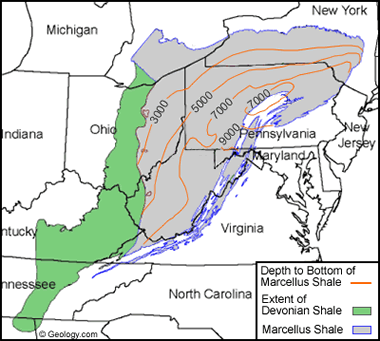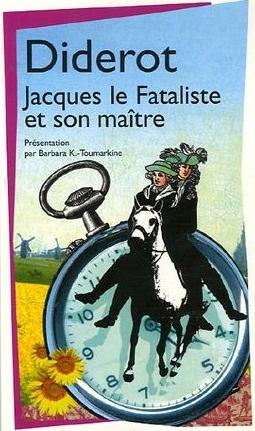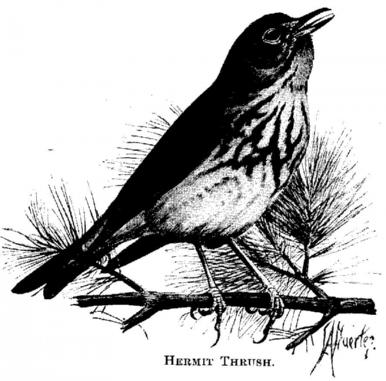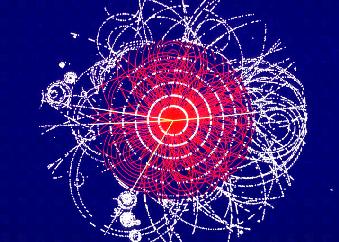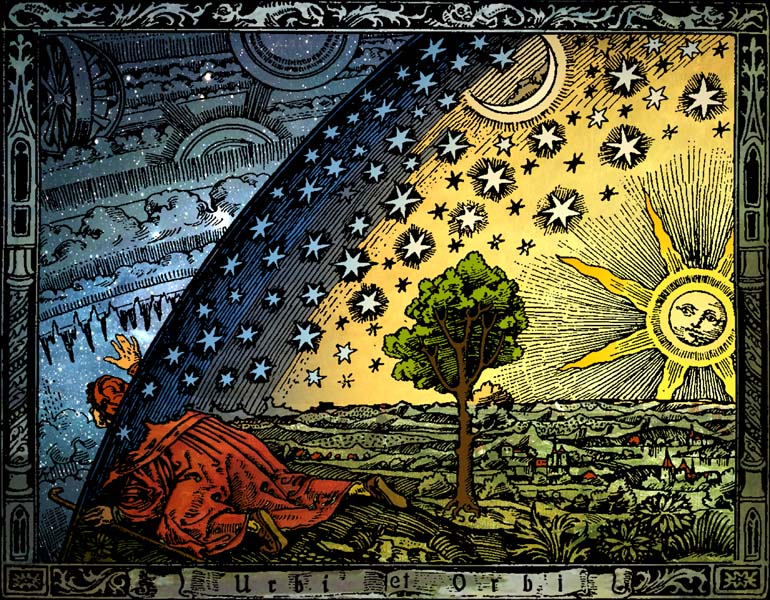

|
Grace takes the form of methane Warnings that we humans are hogging more than our share of the earth’s resources and collectively making the place less livable have been in our face for decades, if not centuries. The need for collective global action has been obvious, while we as a species have equivocated, temporized and denied. Now comes reprieve we have not earned in the form of a little more time to get our act together. The Marcellus Shale runs through Appalachia, from Eastern Tennessee up through mid New York State, and was surveyed last year to contain perhaps 50 trillion cu ft of recoverable natural gas, clean energy with much less CO2 per joule than coal. Let’s use this reprieve wisely. |
1 October 2009
|
||
|
Gandhi on Love Fear and love are contradictory terms. Love is reckless in giving away, oblivious as to what it gets in return. Love wrestles with the world as with the self and ultimately gains mastery over all other feelings. My daily experience, as of those who are working with me, is that every problem lends itself to solution if we are determined to make the law of truth and non-violence the law of life. For truth and non-violence are, to me, faces of the same coin. The law of love will work, just as the law of gravitation will work, whether we accept it or not. — Mahatma Gandhi turns 140 years old today |
2 October 2009
|
||
|
Harvest moon The Hindoos compare the moon to a saintly being who has reached the last stage of bodily existence. Great restorer of antiquity, great enchanter! In a mild night when the harvest or hunter’s moon shines unobstructedly, the houses in our village, whatever architect they may have had by day, acknowledge only a master. The village street is then as wild as the forest. New and old things are confounded. I know not whether I am sitting on the ruins of a wall, or on the material which is to compose a new one. Nature is an instructed and impartial teacher, spreading no crude opinions, and flattering none; she will be neither radical nor conservative. Consider the moonlight, so civil, yet so savage! — Henry David Thoreau |
3 October 2009
|
||
|
Decisions Much of our anxiety about decisions derives from frustration that the available choices do not include what we really want – a refusal to accept the limitations of our power in the situation. The other usual source of discomfort with decision-making is uncertainty about the future: if only we knew better what was coming, it would be easy to decide how to prepare for it. It is often helpful to go through a process of exploring these feelings aloud. Also helpful is to imagine in fantasy all the expected possibilities, how we might feel with each. Even better is to focus on possible surprise or unexpected outcomes. The decision itself is best left up to the unconscious. Instead of asking, nervously, ‘what shall I do?’, we ask, curiously, ‘I wonder what I shall decide to do’. We step back from the decision-making process, and watch it until we no longer feel uncertainty about what that decision will be. Accept that we will continue continue to feel ambivalence long after the decision is made. — Josh Mitteldorf |
4 October 2009
|
||
|
Destin Faute de savoir ce qui est écrit là-haut, on ne sait ni ce qu’on veut ni ce qu’on fait, et qu’on suit sa fantaisie qu’on appelle raison, ou sa raison qui n’est souvent qu’une dangereuse fantaisie qui tourne tantôt bien, tantôt mal. Ignorant of what fate has in store for us, we cannot know what we are doing or even what we really want, so we follow that which we call ‘reason’ which often is but a dangerous fantasy, sometimes turning out well, sometimes rather badly. — Denis Diderot, born this day in 1713, was a French novelist, philosopher and author of L’Encyclopédie (1751–1772), epitomizing the spirit of Enlightenment thought. Much more than a work of reference, L’Encyclopédie became a program for change, transferring knowledge and authority from the clerical to the secular domains; with its publication, religion and irreligion became polarized and the various shades of distinction within Deism and natural religion began to disappear. Est-ce qu’on est maître de devenir ou de ne pas devenir amoureux? Et quand on l’est, est-on maître d’agir comme si on ne l’était pas? Do we have anything to say about whether we fall in love? And should we fall in love, do we have any choice but to follow? Both quotations are from Jacques, the Fatalist, a novel about fate that is both funny and deep. |
5 October 2009
|
||
|
Whatever it takes In psychological experiments conducted at UC Santa Barbara, Travis Proulx has found that reading Kafka enhances the mind’s ability to perceive new patterns, even when those patterns are unconsciously appreciated, and not articulated. It’s an interesting result, and convention dictates that Proulx gets first crack at telling us what it means. Is this, as the author claims, a benefit of confronting the absurd, forcing the mind into a mode where it casts a wider net in search of reason and order? Drawing us into paradox is a mark of great art. We all recognize the utility of keeping our minds fresh, avoiding the dismissive response, renewing our capacity for creativity. My take on this is that there is no formula for stimulating our creativity. It is exciting that some correlates of creativity can be measured, but the ability to enhance creativity defies quantification and is, in fact, a mark of high art. |
6 October 2009
|
||
|
7 October 2009
|
||
|
Animal talk Perhaps it’s a conceit to imagine that language belongs exclusively to humans. So far, we have decoded only a few of their ‘words’. We presume that the language is limited to a few warning calls, but we really don’t know how extensive or how nuanced it is. A few years ago, we would have said there is no language at all. Best studied are warning cries, because we can see the behaviors that they elicit. There is a powerful selective incentive to develop recognition of warning cries, so we shouldn’t be surprised if these are the first language that animals exhibit. But is there more? Are there dozens or hundreds of unique sounds in their vocabularies? Is there a grammar that expands the range of meaning with context? Apes and monkeys are close enough to humans that we can easily imagine a complex sociality. But birds with their tiny brains seem, if anything, more adapted for verbalization. And dolphins’ language is known to be rich and varied, but thus far un-decoded by man. Olivia Judson, blogging in the NYTimes this week, tells us about animal cries. Jungle animals are polyglots, and can understand the cries of other species: Diana monkeys, for example, don’t use the same sounds for “eagle!” or “leopard!” as Campbell’s monkeys do. But they respond to recordings of a Campbell’s monkey shouting “eagle!” or “leopard!” just as they would to a shout from one of their own, or a sighting of the predator itself. Judson describes the little that is known about how animal groups teach their young to talk: Young vervet monkeys, for example, appear to have an innate tendency to shout “eagle!” — but they do it at anything that’s in the air, be it an eagle, a vulture or a falling leaf. They shout “snake!” at long, thin things on the ground — like twigs. As they get older they learn to refine their calls. This seems to be through positive reinforcement — when they make the right call, adults join in and do it too. (It’s tempting to think there may be negative reinforcement as well. One researcher reported seeing a mother run up a tree after her infant gave a “leopard!” alarm. But there was no leopard — only a harmless mongoose — and when the mother caught up with the infant, she gave it a smack.) |
8 October 2009
|
||
|
Nobel Prizes for Peace “Thinking too well of people often allows them to be better than they otherwise would be.” — Nelson Mandela |
9 October 2009
|
||
|
Shhh! Every word is an unnecessary stain on silence and nothingness. — Sameul Beckett I shall state silences more competently than ever a better man spangled the butterflies of vertigo. |
10 October 2009
|
||
|
Creativity is the wild beast that gnaws at your soul. To harness your will to the tiger, to ride it through the jungle is the very essence of what it is to be alive. — Josh Mitteldorf |
11 October 2009
|
||
|
Breeding for tameness is remarkably effective. Dmitri Belyaev showed that in a small number of generations, foxes could be made as cuddly and eager for human affection as dogs. Perhaps we are also a product of domestication. Over the last 30,000 years, human brain size*, tooth size, and jaw size have all been on the decrease — exactly the same kind of changes that have occurred as animals such as dogs were domesticated, says Richard Wrangham, a biological anthropologist at Harvard. This raises the intriguing possibility that humans have been on an evolutionary journey from aggressive chimpanzee-like ancestor to the relatively tame species we are today. If this is the case, who did the domesticating? The answer, suggests Wrangham, is that we did. Humans, he argues, are ‘self-domesticated apes’, with natural selection favoring individuals that showed tame and cooperative behavior, and weeding out the more aggressive and antagonistic among us. * Surely this is a misprint, and brain size is increasing, even as teeth and jaws grow smaller. —JJM |
12 October 2009
|
||
|
The Physics of Fate The Large Hadron Collider failed because the Higgs Boson doesn’t wish to be discovered. Surely this is the kind of thinking that primitive philosophers invoked in ancient times. Banished by the Enlightenment, teleological thinking has long ago been routed out of the halls of Science. Think again. The phenomena of physics have led us to such a strange place that brilliant and straight-faced mainstream scientists talk about Fate. “It must be our prediction that all Higgs producing machines shall have bad luck,” says Holger Bech Nielsen, of the Niels Bohr Institute in Copenhagen. article in Science Times today |
13 October 2009
|
||
|
Dust Congregated in loops of dirt and hair —
Ravi Shankar (unrelated to the musician) |
14 October 2009
|
||
|
Compassion and the Dismal Science “We all agree that pessimism is a mark of superior intellect.” — John Kenneth Galbraith was born 101 years ago today “Faced with the choice between changing one’s mind and proving there is no need to do so, almost everyone gets busy on the proof.” |
15 October 2009
|
||
|
Half life
|
16 October 2009
|
||
|
Man’s Place in the Universe Over billions of years, life has transformed the chemical face of the Earth. Over thousands of years (but accelerating in the last 100), human life has transformed both the Earth and the biosphere. As genetic engineering continues to advance, it seems likely that man will also transform his own biology. Will the successors of humankind go on to transform our Galaxy for their own habitation? The Universe is far larger than the Earth, but the available time is also far longer than the few decades in which technology has developed. This slide show offers some perspective on the future of the Universe, starting with our small corner. The premise (if I may give away the punch line in the last slide) is that our legacy may be destined to become an organized intergalactic community that takes control of the evolution of the cosmos, and that we could shoot all that to hell if we as a species don’t manage to survive the next century. I actually find the premise that life’s progeny will someday take control of the motions of stars and galaxies more plausible than the idea that the next century on Earth is crucial. We don’t know if intelligent life is evolving or has evolved elsewhere, and we don’t know if intelligent civilizations would evolve a second or third or hundredth time on Earth should the first few attempts prove too violent or insufficiently communal to manage an ecosystem that can support us. Slide show: http://thefutureofourworld.ytmnd.com/ |
17 October 2009
|
||
|
May illusion be swept aside, uncovering joy. — Josh Mitteldorf |
18 October 2009
|
||
|
A scientist discovers something marvelous and loses her objectivity Irene Pepperberg is a psychologist who claims to find meaning, intention and reason in the speech of parrots. Alex was her star pupil. Dr Pepperberg’s pioneering research resulted in Alex learning elements of English speech to identify 50 different objects, 7 colours, 5 shapes, quantities up to and including 6 and a zero-like concept. He used phrases such as ‘I want X’ and ‘Wanna go Y,’ where X and Y were appropriate object and location labels. He acquired concepts of categories, bigger and smaller, same-different, and absence. Alex combined his labels to identify, request, refuse, and categorise more than 100 different items demonstrating a level and scope of cognitive abilities never expected in an avian species. Pepperberg says that Alex showed the emotional equivalent of a 2 year-old child and intellectual equivalent of a 5 year-old. Her research with Alex shattered the generally held notion that parrots are only capable of mindless vocal mimicry.
Article at Science Centric |
19 October 2009
|
||
|
Among the rocks Oh, good gigantic smile o’ the brown old earth,
— Robert Browning |
20 October 2009
|
||
|
Mortification of the flesh, masochism, and self-mutilation explained ‘Real pain can alone cure us of imaginary ills. We feel a thousand miseries till we are lucky enough to feel misery.’ — Samuel Taylor Coleridge, born this day in 1772 ...through caverns measurelss to man, down to a sunless sea. |
21 October 2009
|
||
|
Does biology exploit quantum duality? Do our brains? Quantum duality is part of the weirdness of quantum mechanics. There is more information in every packet of energy than is available when that packet is absorbed or detected. The extra information is in the form of ‘wave phase’, which can’t be measured directly, but it determines the way a quantum interacts with other quanta. Quantum computers use this principle to process information in parallel, which can, in theory achieve efficiencies vastly greater than any classical computer could attain. One of the great questions of philosophy of mind, in my opinion, is whether our brains are quantum computers. If so, this could certainly explain intuition and the ability to arrive at answers without knowing where they came from. It might even explain telepathy and precognition. But the idea that the brain uses QM has been deeply controversial. Roger Penrose, one of the smartest people in the universe, has argued powerfully for ‘yes’, based on detailed arguments from the structure of neurons. Max Tegmark, a younger physics genius who may well be in Penrose’s league, argues just as forcefully for ‘no’. Now Scientific American reports on the work of Gregory Engel (at UChicago) to the effect that green plants use quantum mechanics in absorbing light, deciding how best to use each photon before committing to how the photon will be routed and where it will be absorbed. This makes plausible then general idea that natural selection has been smart enough to exploit QM where it can gain an advantage that way.
Scientific American article on quantum data processing in plants |
22 October 2009
|
||
|
My delight and thy delight MY delight and thy delight |
23 October 2009
|
||
|
Brother Sun and all God’s creatures “I am a religious Russian Orthodox person and I understand ‘religion’ in the literal meaning of the word, as ‘re-ligio’, that is to say the restoration of connections, the restoration of the ‘legato’ of life. There is no more serious task for music than this.” Sofia Gubaidulina, 78 years old today, continues to conceive some of the most interesting sounds in music. The Canticle of the Sun, also known as the Laudes Creaturarum (‘Praise of the Creatures’), is a religious song composed by Saint Francis of Assisi. It was written in the Umbrian dialect of Italian but has since been translated into many languages. It is believed to be among the first works of literature, if not the first, written in the Italian language. Gubaidulina created a setting of the Canticle for cello, choir, and percussion, as a birthday present for Mstislav Rostropovich in 1997. All praise is yours, all glory, all honor, and all blessing.
Be praised, my Lord, through all your creatures,
Be praised, my Lord, through Sister Moon and the stars;
Be praised, my Lord, through Brothers Wind and Air, Listen with headphones, undistracted to the closing movement of the Canticle, performed by Rostropovich and friends. |
24 October 2009
|
||
|
Circularity Since virtue is its own reward, often the most virtuous thing we can do is to create an opportunity for someone to offer a kindness to ourselves, or to another. — Josh Mitteldorf |
25 October 2009
|
||
|
How to be happy We do not know that all is hopeless, we just conclude it from time to time, based on our emotional state, not our knowledge. Having sufficient humility to recaognize that we do not know is a key stepping stone to improving our wellbeing. ...The first premise of this inquiry is that we improve our chances by affirmatively seeking to understand. By not becoming tired, satisfied, or complacent. This is a pursuit that does not involve a competition for resources. We all have the power to improve our understanding and improve our lives. But we must keep asking questions. The second premise of this inquiry is that ... we must each develop our own theory of happiness, figure out what it might look like, and then test it, continuously, throughout our lives. A third premise, perhaps most important, is that the mere fact that we have tried and failed so many times tells us nothing. It is the spirit of inquiry that matters. ... If we preserve a spirit of inquiry, this spirit itself is quite directly connected to, and a harbinger of, happiness. The spirit of inquiry requires self-doubt – not a lack of self-esteem; but, rather, the recognition that all of our understanding is provisional, and all of our understanding is susceptible to improvement. — from Ehard’s Blog |
26 October 2009
|
||
|
How life began In one of the best science articles I’ve seen in many a year, Nick Lane pulls together several strands of evidence to propose some new twists in the story of the origin of life. The major new clue is about energy metabolism. The life with which we are familiar today depends (ultimately) on sunlight for energy; but photosynthesis is complicated, and it is clear that it developed much later in life’s history. Lane takes a clue from the unexpected way that life stores energy, using not chemical bonds but electrochemistry. Pumping hydrogen ions across a membrane is a process common to all of life, from bacteria to archaea to eukaryotes (that’s us). Perhaps life began in a place where electrochemical energy was free and plentiful, where acid welled up from vents deep in the ocean, and where rocks were perforated with tiny pores, providing catalysis, protection and a basis for competition, before cell membranes were ‘invented’.
Read the whole story in New Scientist magazine |
27 October 2009
|
||
|
Where were you when the Velociraptors ambushed the Diplodocus? When you were a tadpole and I was a fish Mindless we lived and mindless we loved We were amphibians, scaled and tailed, Loud I howled through the moonlit wastes, I carved the fight on a reindeer bone Our trail is on the Kimmeridge clay — Excerpted from Evolution by Langdon Smith |
28 October 2009
|
||
|
You can’t have one without the other “It was out of the rind of one apple tasted that good and evil leapt
forth into the world, like two twins cleaving together.” – Paul Auster, in a fictional quote from Milton’s Paradise Lost In my meditation this morning, I realized for the first time that
I like exhaling better than inhaling. |
29 October 2009
|
||
|
The universe began as an undifferentiated gas. Why didn’t it stay that way? In the Big Bang theory, the Universe started out in ‘thermodynamic equilibrium’, the state of maximum entropy, meaning that there was no physical motive for change. Another way to say this is that there was no usable energy, and no information. Nothing interesting could happen. Well, a lot of interesting stuff happened after that. How did the Universe go from a state of maximum entropy to a state of low entropy, enabling galaxies, stars and life? It all came from the expansion. One way to describe what happened is that the maximum entropy of the expanding Universe got bigger faster than the actual entropy could keep up. Another way to describe it is that gravitational collapse has the potential to release enormous amounts of energy that aren’t part of the original entropy calculation. The paradox just described is intimately related to another deep question in physics: why time is ‘directional’. Left and right, forward and backward are arbitrary directions in space, but ‘before’ and ‘after’ are physically quite different. If the Universe were contracting, would we experience time going backward, so we would say it was expanding? Believe it or not, this is a deep question, on which physicists can disagree. Watch
Sean Carroll talk about the arrow of time, why it is mysterious, and
where he thinks it comes from. (Carroll’s view is that the arrow of time comes from cosmology and the nature of the Big Bang. I think he’s wrong and the arrow of time comes from quantum mechanics. Neither of us is sure. -JJM) |
30 October 2009
|
||
|
Ode on a Grecian Urn I V — John Keats, born 1795 on All Hallows Eve, lived just 25 years |
31 October 2009
|
